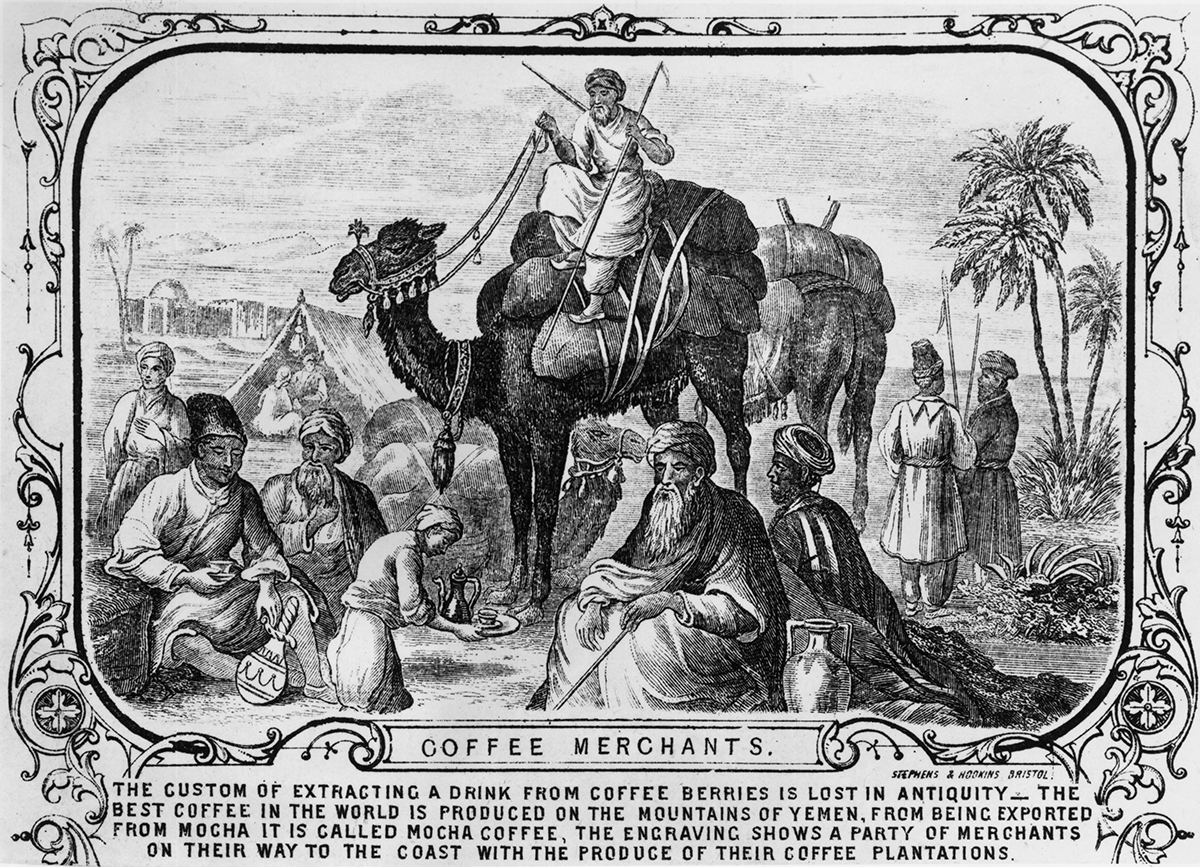Shopping Bag
0
- No products in the cart.

The story of the coffee plant and the drink we make from it is pretty remarkable, but no one is really sure when and where it was first discovered. The best-known rumor is about a goatherd called Kaldi.
Coffee Originated in Ethiopia
Legend has it that one day, many hundreds of years ago in the Ethiopian highlands, Kaldi’s goats started eating some berries they found on a tree and became so energetic that they wouldn’t go to sleep that night.
Intrigued, Kaldi collected some of the berries and the following morning took them to his local monastery and explained the effect they had on his goats. The monks roasted the berries and mixed them with water, creating a delicious drink.
We know that all of the world’s coffee originated from plants in Ethiopia. Coffee plants are evergreen, meaning they have green leaves all year around. It takes three to five years of coffee plants to start flowering. The small white flowers then produce green berries, which take almost a year to ripen and turn red. These berries are home to two small pits, and these pits are what we know as coffee beans.
First ‘Starbucks’ Introduced Over 500 Years Ago on the Arabian Peninsula
Whether from Kaldi’s monastery or some other source, by the 15th century both coffee beans and excitement about their energizing effects spread from Ethiopia to the Arabian Peninsula. The beverage initially met with controversy and was banned on religious grounds. But soon people realized that coffee would help them stay alert during long prayer and study sessions, and the bans were reversed.
The people of the Arabian Peninsula loved their coffee, a dietary staple, which they called qahwah. They drank it both at home and in the first coffee houses, public places for people to meet, gather and talk.
The first known public coffee houses, which weren’t that different to today’s high-street coffee shops, were founded in Arabia. They were very popular and, as well as drinking coffee, customers would listen to music, watch performers and keep up to date on the news.
Coffee’s Energizing Buzz Accounts For Its Demand
Probably the main reason coffee became so popular was because of the buzz you get when you drink it. This effect is due to the caffeine in the coffee beans. As our cells do work they produce a molecule called adenosine. Adenosine enters the bloodstream and travels around the body until it binds to brain cells. This sets off a series of reactions to tell the brain we are tired.
Caffeine binds to brain cells in the place of adenosine. This means that when we drink coffee, the brain doesn’t get the message that we’re tired. Instead the brain releases adrenaline, a hormone which makes our hearts beat faster, dilates our pupils and releases sugar into our blood. This is what causes coffee’s energizing effect.
Read the full article:
http://spacecoastdaily.com/2017/12/history-of-coffee-coffee-beans-are-second-most-traded-raw-material-worldwide/
